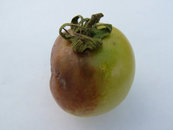Kent does get late frosts - however they are rarer here than, say, in the Midlands or East Anglia, so the risk is less. Have some sacking, old newspaper, net curtains - whatever, although I should remind you that the Trading Store sells Crop Protection fleece very cheap! - ready as the leaves emerge, and keep your eye on the weather forecast. A light covering is all it needs to protect young leaves from scorching. Even a 'ground frost' later in spring, which may blacken the tips of the leaves, does not do any serious damage.
You do not need to 'chit' seed potatoes before planting. We lay seed potatoes out in a light, frost-fee place so they don't produce long fragile shoots in the interval between buying them and planting them. Chitting doesn't speed up the crop and you can plant seed potatoes straight away without doing it.
For more on growing potatoes locally click here to go to our advice page.


 RSS Feed
RSS Feed
